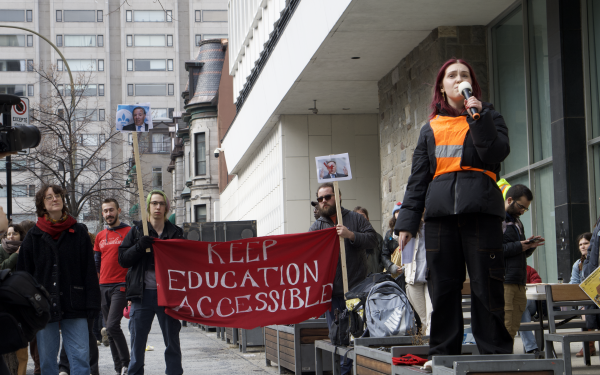Editorial: CAQ is Celebrating Its Win While Women Are Still Dying
Nine femicides in nine weeks.
That is nine times when the provincial government failed women by not providing enough resources to end conjugal violence. An estimated 11 women in Quebec have died from this in 2022 alone.
The rise of conjugal violence is a growing epidemic in Quebec and politicians have yet to address it. Even during the campaigning period of Quebec’s 43rd provincial elections, candidates merely expressed their frustrations and sorrow towards the deaths of Synthia Bussière, 38, and her two children—the most recent victims at that time.
And yet, this problem is not new in Quebec nor in Canada. Domestic violence cases hit record highs last year. In 2021, Quebec reported the second-highest number of femicides in Canada, with a total of 26 women killed. One hundred and seventy-three femicides were reported in the country, of which 32 per cent of the victims were racialized and 19 per cent were Indigenous.
Domestic violence cases will not end without a concrete solution.
A study conducted by the University of Sherbrooke found that this spike in conjugal violence is strongly related to confinement measures and ongoing health crisis. Researchers found that stress from confined living situations, increased job losses and the cancellation of activities led to a higher risk of abusers turning to violence to as an outlet.
Even during the height of pandemic waves, François Legault, Quebec’s re-elected premier, was greatly criticized for his actions towards the issue despite claiming that stopping domestic abuse was a priority.
The Coalition Avenir Quebec originally pledged $22.5 million in 2021 over five years to finance shelters for victims and help curb domestic violence. After critics called out Legault for the small funding he gave to women’s shelters, the government announced that it would increase this budget to $222.9 million. While this action could be a step in the right direction, Legault’s intentions are questionable as it seems like he only made this decision to appeal to public pressure, amid the upcoming elections. While Public Safety Minister Genevieve Guilbault announced that $92 million of that budget would go to funding women’s shelters, the rest of the budget’s allocations are unclear.
Moreover, Legault’s implementation of curfews throughout the pandemic disproportionately harmed women in abusive relationships. The curfew trapped them in houses with their abusers, making it harder to escape.
While COVID-19 confinement measures certainly worsened the situation for women in abusive relationships, domestic violence won’t just go away once the pandemic is fully eradicated. Domestic violence was around prior to the pandemic, except the reported cases were significantly lower.
How then, can we stop the ongoing pattern of domestic abuse?
Throwing money at the problem isn’t the solution. Rather, politicians must follow through with their promises and ensure that the funding is being used wisely.
In 2020, Legault announced that $120 million would be invested to create more safe spaces for women fleeing abuse. This money, however, was never used to open up more shelters for women escaping unsafe homes. The premier has since promised to take matters into his own hands but has yet to take responsibility for his neglect of the situation.
Domestic violence cases continue to rise, and we must question whether the CAQ has done enough and ever will. Our premier continues to kiss his own ass for the bare-minimal work he has done.
How then, can we stop the ongoing pattern of domestic abuse?
On one end, the CAQ is prioritizing social programs, helplines and shelters. But are these solutions adequately funded and truly helping victims escape abusive relationships? Or are more radical steps necessary? Some suggest reforming the justice system, which oftentimes penalizes women who denounce their abusers by evoking their allegations in custody disputes.
How many more women must die for their lives to be taken seriously?
This article originally appeared in Volume 43, Issue 4, published October 12, 2022.


_600_832_s.png)


_(1)_600_375_s_c1.png)

